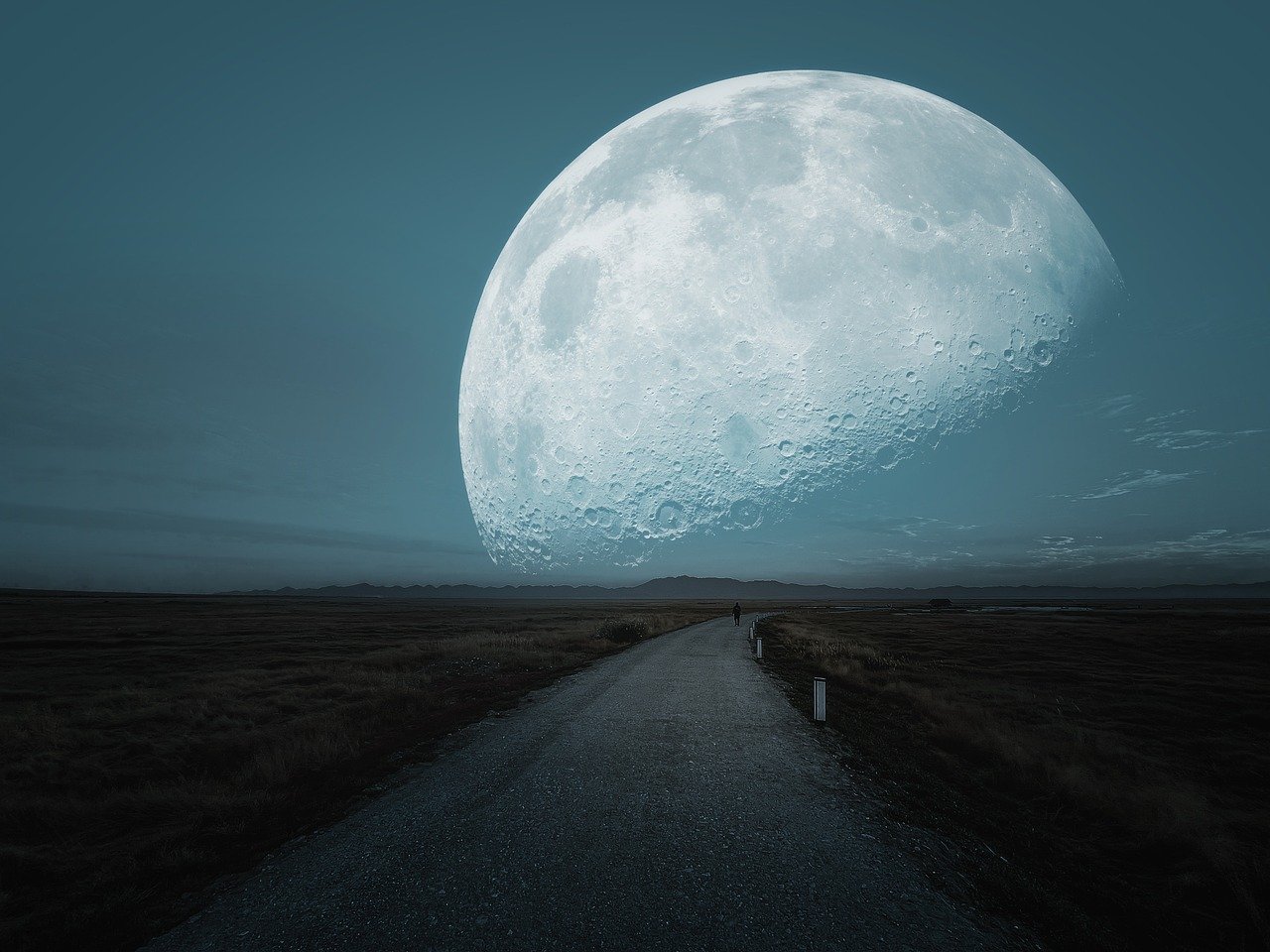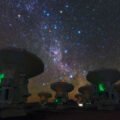With NASA preparing to return humans to the moon on the Artemis missions, understanding the physical material the moon is made of has never been more critical.
For instance, how will moon dust affect the operation of the wheels of a lunar vehicle? What type of drill is most effective for digging into the lunar regolith (which is the fancy name for the rocks and dust the moon is made of), and how will the rocks and dirt found on the moon affect the clothing, habitats, and other materials that future lunar astronauts and colonists will need to survive?
To answer these questions, as well as give a peek into the future of farming on the moon and maybe even one day Mars, the Debrief’s Chrissy Newton sits down with NASA Astromaterials expert John E. Gruener.
Astromaterials, Regolith, and Simulant
A veteran in the study of lunar regolith, Gruener works at the Astromaterials Research and Exploration Science Division at NASA’s Johnson Space Center.
In the first part of the interview, Gruener talks about the history of the Astromaterials division, which was born out of the real-world necessity to store the nearly 380 kilograms of lunar regolith collected during the Apollo lunar landing missions of the late 1960s and early 1970s. Since then, the division has grown into the primary storage facility for all types of extraterrestrial materials that humans have collected, which includes meteorites delivered to Earth by mother nature.
“We have a lot more than just the Apollo samples,” Gruener tells Newton. “We have meteorites from all over, including the moon. But also Mars. We have cosmic dust, (and) solar wind. As much (material) as we can get from the solar system.”
Sure, 380 kilograms may sound like a lot, especially if your job is to pick it up and move it around. But this precious-yet-limited store of lunar regolith is nowhere near enough for testing the various projects under development for Artemis.
As a result, the researchers at NASA and their civilian contractors need something to “simulate” that lunar regolith so they can test their various materials, tools, and systems to see how they handle the environment of the moon without having to go there to do it. That is where Gruener and his Astromaterials team come into the equation.
“It turns out the soil on the moon is both crystalline materials, rocks, and minerals, but also glass material from impacts, billions and billions of years of impacts,” Gruener explains.
Also, the material composition of the lunar regolith is different depending on where you want to go. For instance, the darker-colored Mare regions where Apollo astronauts collected their samples are much more basaltic than the lighter-colored polar regions where Artemis hopes to set up a permanent base on the moon.
“That’s one of those brighter areas,” Gruener notes of the moon’s polar regions. “Those rocks are harder to find out there (on Earth).”
That’s mainly because this type of lunar material contains a large amount of anorthosite. And as Gruener notes, there aren’t a lot of places on Earth where one can collect this type of material.
“Right now, we get anorthosite from Montana,” he explains, while also noting that there are some sizeable deposits near Toronto, Canada, and in Greenland. Still, he cautions even with the best base materials to replicate lunar regolith and create a simulated version of it, or “simulant,” it is a challenge to make something that perfectly replicates that composition of actual moon rocks and dust.
“We can’t really recreate the moon as well as we would like,” Gruener tells Newton. “We don’t really even come close to maybe 80% similar. Maybe it’s even 75 or 70%.”
The result, he says, is something that NASA calls simulant, and his team calls fake moon dirt.
With fake Moon dirt, Particles, Size (and Composition) Can Be Everything
Gruener also notes that along with the raw material composition of the simulant, his team tries to approximate the “particle size distribution” of regolith. This means making fake moon dirt that has particles as small as a few microns in size combined with particles of increasing sizes, with the goal of coming as close to the actual particle size distribution found in the real lunar regolith.
“We start with rocks and end up with something that is very much like cat litter,” Gruener explains.
It’s a meticulous process and one that can be rather challenging depending on the needs of the researchers who plan to test their equipment on and around simulated lunar regolith. Therefore, Gruener and his Astromaterials team use three grades of simulant, from low-fidelity basic “simulant” to medium and high-fidelity grades.
Basically, if you need something that is kinda close to moon dirt to test a wheel or a hinge, a low-fidelity simulant may be enough, at least at first. But a more complex system may require something that is much closer to the real thing. In that case, the Astromaterials lab will have to use a high-fidelity simulant.
“At NASA, most projects have what we call a Technological Readiness Level, or TRL,” Gruener says.
An early-stage project with a TRL of only 2 or 3 may get by with a lower fidelity simulant. But as a project or component gets closer to actually going to the moon, the researchers and engineers testing it will likely need something that is much closer to real moon dirt, so a higher fidelity simulant will be needed.
“If you’re at TRL level two or three, you may not need the highest level simulant,” Gruener tells Newton, “but when you start getting up in TRLs 5 and 6 and 7, you need to graduate to better, more expensive simulants.”
Also, the type of test being run will dictate how much simulant is needed. For example, testing a small hinge may require only a few kilograms of fake moon dirt.
“Most of the projects we work with require maybe 5 kilograms or less,” Gruener tells Newton.
However, the NASA veteran notes some projects, like, say, testing a full-sized lunar rover or habitat, may require a lot more.
“Those orders are typically measured in tons,” says Gruener.
Luckily, along with Gruener’s Astromaterials team, which can make simulant at the various degrees of fidelity needed for such projects, NASA also has a large testing facility known as the Granular Mechanics Lab at the Kennedy Space Center where those large amounts of high fidelity simulant can do their thing.
“It’s called swamp works,” says Gruener, due to its location in Florida. “They have a facility that has like 50 or 60 tons of lunar simulant.”
Giant Steps are What You Take, Farming on the Moon
In the same interview, Gruener and Newton also discuss the idea of future farming on the moon and the role simulant will play in testing those methods on Earth before actually trying them on-site at the Artemis base.
“The biological and physical sciences division at NASA headquarters, they’re very interested in growing plants in the lunar regolith,” Gruener tells Newton. In fact, he says, NASA recently sent out a request for ideas on how to grow plants in lunar soil. Projects like that, he notes, will undoubtedly first try to grow plants in lunar simulant.
“If we’re going to be there on the moon for a long, long period of time, with quite a few people, we’re gonna have to grow food there because that supply chain, from the earth to the moon, is fraught with peril,” Gruner explains. “From launches that have to work, to spacecraft that can get lost on their way to the moon, and then landing, that all has to work perfectly.”
“It would be much better if we could live off of the land like humans have done for ever and ever,” he adds.
Unfortunately, there is nothing organic on the moon. And the organic components within soil found on Earth are very important for growing plants.
“Back in the 1990s, I was a space farmer,” Gruener recalls with a chuckle. “For about ten years, I worked on a project in bio-regenerative life support systems where we were growing plants in life support systems. And those plants would give us oxygen through photosynthesis, and they give us water through transpiration, and then they’d also give us food to eat.”
So, Gruener explains, along with the idea of growing food in lunar soil, there is a need to grow plants on the moon to create a sustainable ecosystem for future researchers and potentially even colonists.
“As Artemis matures, and we get away from the first few missions that are six or seven days, and we start staying there for months and months, this whole idea of a regenerative life support system is going to come back because it is so important,” he says.
Of course, throughout the interview, Gruener reminds Newton that his job and his passion lie in giving researchers and engineers the highest quality fake moon dirt that is close as possible to the real thing, whereas the difficult process of remediating lunar regolith and then enriching it with organic compounds, minerals, micronutrients, and everything else that will be needed to grow food and other plants on the moon is someone else’s job entirely.
“I always tell people I’m just the dirt guy,” Gruener says with a wry smile. “If you want to know about plants, talk to the plant guys.”
Christopher Plain is a Science Fiction and Fantasy novelist and Head Science Writer at The Debrief. Follow and connect with him on Twitter, learn about his books at plainfiction.com, or email him directly at christopher@thedebrief.org.

